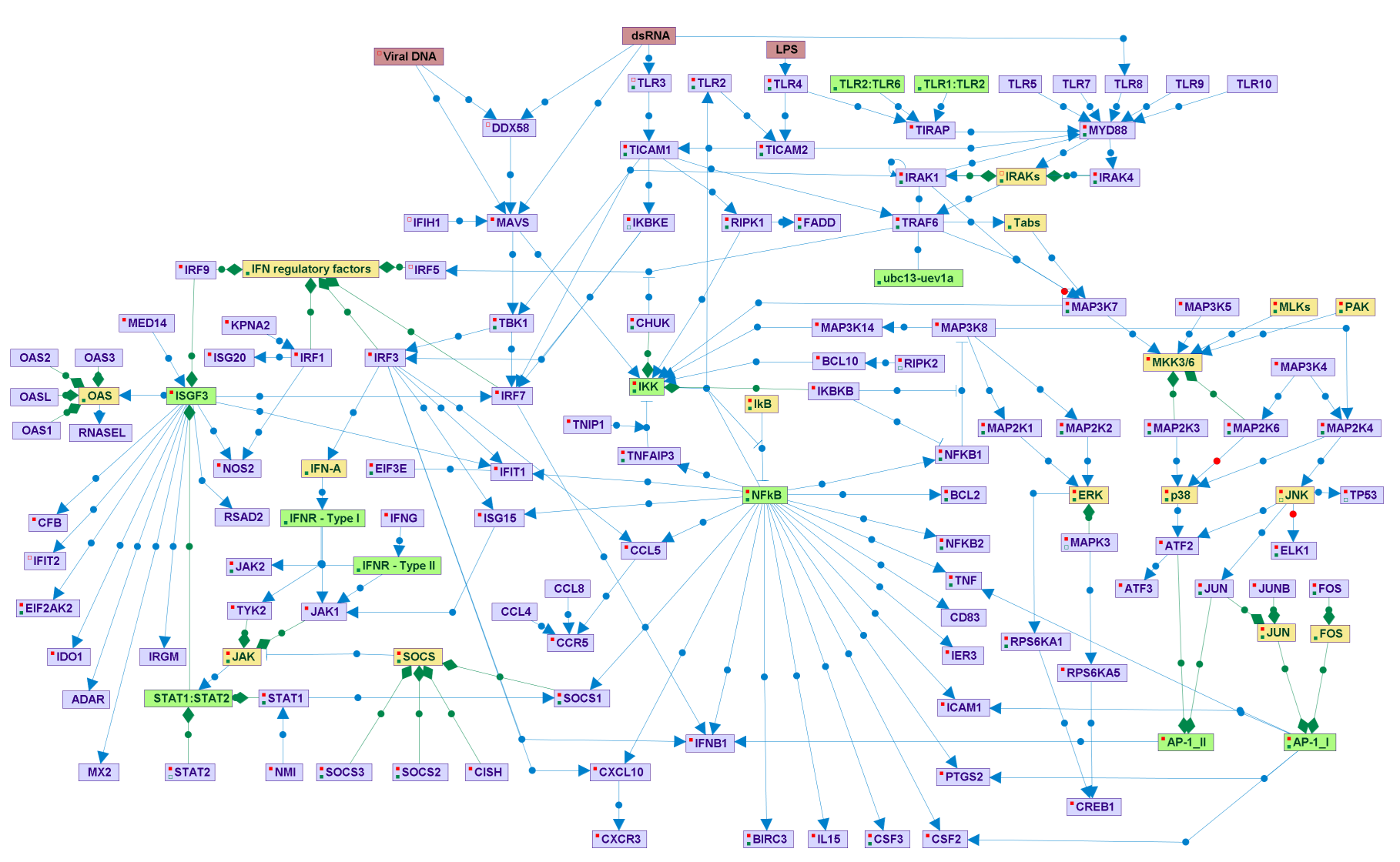Toll-like receptors (TLRs) are important sensors of foreign microbial components as well as products of damaged or inflamed self tissues. Upon sensing these molecules, TLRs initiate a series of downstream signaling events that drive cellular responses including the production of cytokines, chemokines, and other inflammatory mediators. This outcome results from the intracellular assembly of protein complexes that drive phosphorylation and other signaling cascades ultimately leading to chromatin remodeling and transcription factor activation. In addition to driving inflammatory responses, TLRs also regulate cell proliferation and survival which serves to expand useful immune cells and integrate inflammatory responses and tissue repair processes. In this context, central TLR signaling molecules, such as the mitogen-activated protein kinases (MAPK) and phosphoinositide 3-kinase (PI3K), play key roles. In addition, four major groups of transcription factors which are targets of TLR activation also control cell fate (IRF3 CREB, AP-1, and NFkB.
